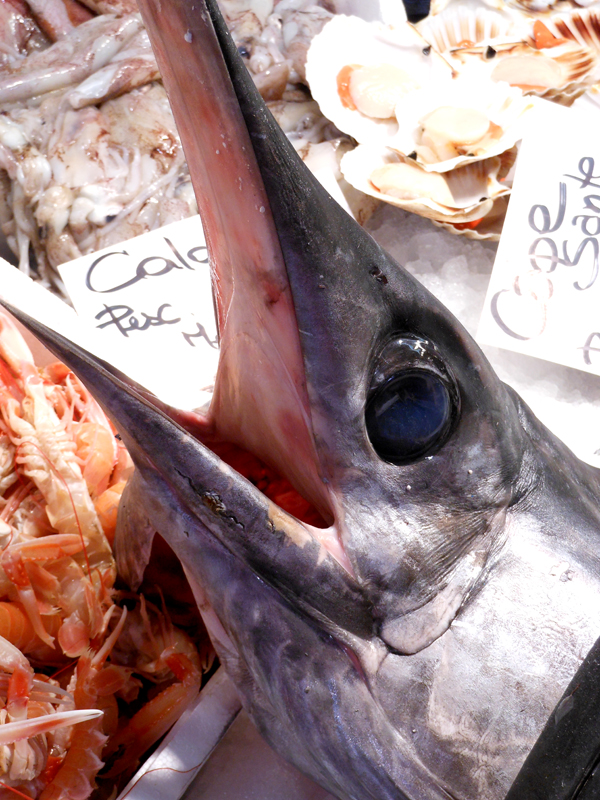We'll start before the bounty reaches the marketplace, on the tiny Island of Burano, where the fishermen get up before dawn...
 |
| This is fresh tonno, or tuna from the northeast Atlantic for €17.80/kilo. The Italians use tuna in many of their delicious sauces for pasta. |
 |
| The purple eye of a swordfish. |
 |
| Octopus flowers. |
| Calamari Freschi Vivi, or fresh live squid. Creepy eyes. |
 |
| One of the artists here at the Scuola Internazionale di Grafica has fig trees, and she would bring in baskets of delicious ripe figs for everyone. |
 |
| The Rialto marketplace. Beyond this stall, you can see the pallazi that line the Canal Grande. |
 |
| Nostrani means home-grown, which likely refers to being grown in small farms on outlying islands in the Venetian lagoon. |
 |
| Purple eggplants. |
 |
| Purple lettuce. |
VERDE = Giardino
Venetian gardens are primarily secret, but perhaps I can get a peek during the week...












You've done it again, Wendy!! Fabulous photos.
ReplyDeleteRemember this time last year at Bowen Barn? They (Jody and Brian) are hosting another musical gala this Sunday and it's making me think of the super time we all had then.
Enjoy every minute of your last month in Venice !